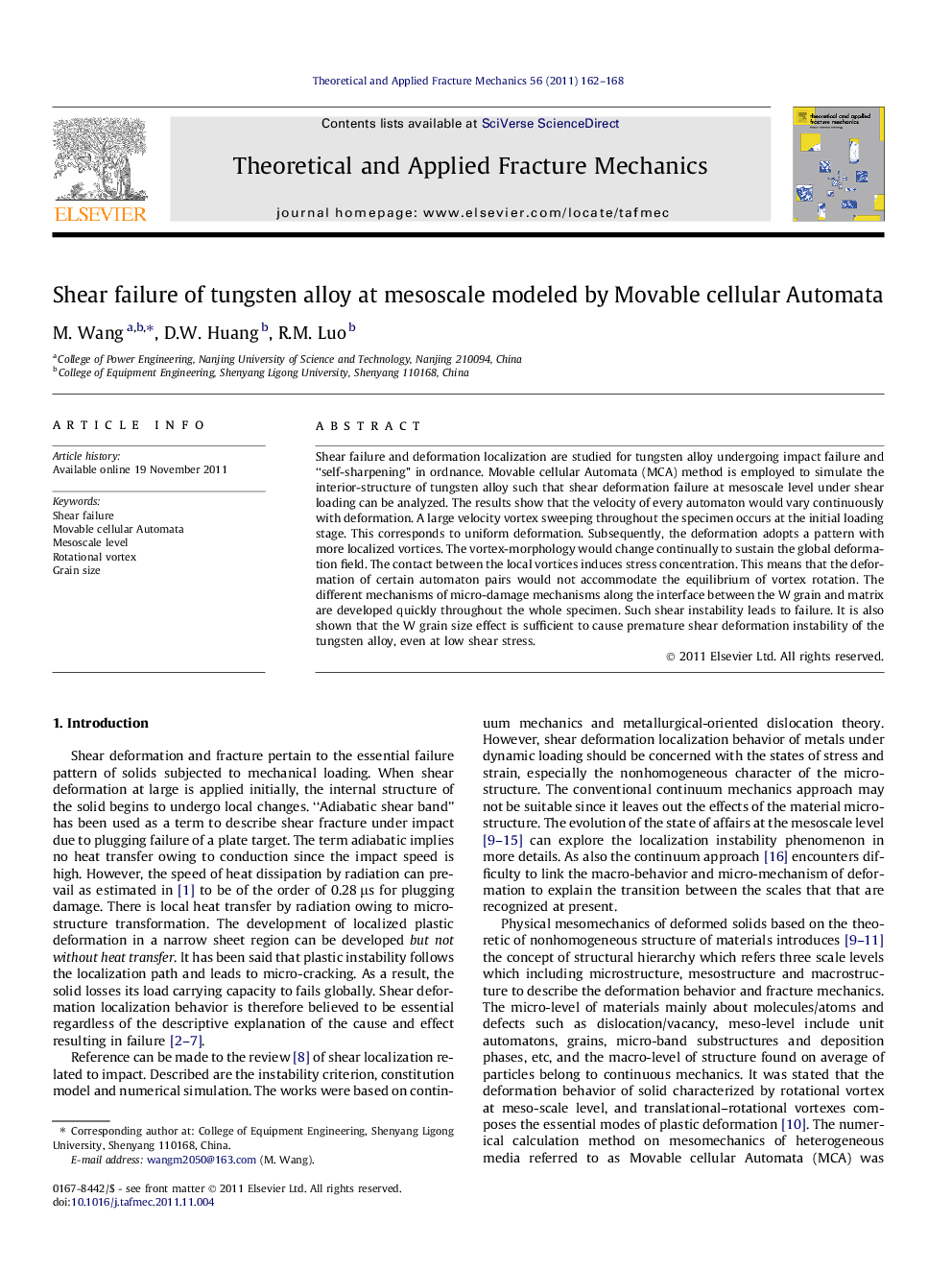| Article ID | Journal | Published Year | Pages | File Type |
|---|---|---|---|---|
| 808097 | Theoretical and Applied Fracture Mechanics | 2011 | 7 Pages |
Shear failure and deformation localization are studied for tungsten alloy undergoing impact failure and “self-sharpening” in ordnance. Movable cellular Automata (MCA) method is employed to simulate the interior-structure of tungsten alloy such that shear deformation failure at mesoscale level under shear loading can be analyzed. The results show that the velocity of every automaton would vary continuously with deformation. A large velocity vortex sweeping throughout the specimen occurs at the initial loading stage. This corresponds to uniform deformation. Subsequently, the deformation adopts a pattern with more localized vortices. The vortex-morphology would change continually to sustain the global deformation field. The contact between the local vortices induces stress concentration. This means that the deformation of certain automaton pairs would not accommodate the equilibrium of vortex rotation. The different mechanisms of micro-damage mechanisms along the interface between the W grain and matrix are developed quickly throughout the whole specimen. Such shear instability leads to failure. It is also shown that the W grain size effect is sufficient to cause premature shear deformation instability of the tungsten alloy, even at low shear stress.
